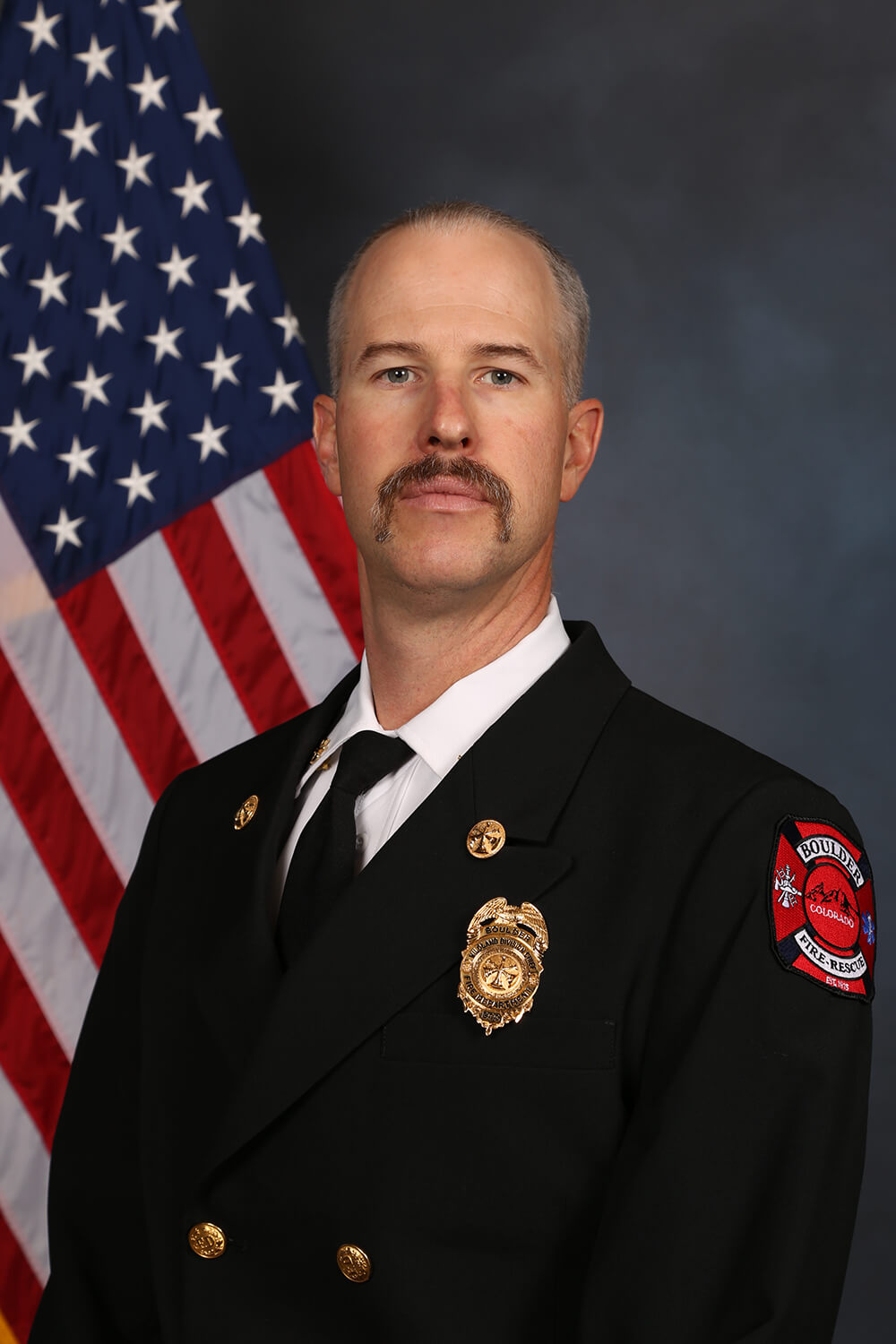Help Themselves in the
Face of Wildfire Risk
Wildfires have become an increasingly frequent and devastating event in Boulder, Colorado as a warming climate and degraded forest conditions turn the city’s surrounding area into a tinderbox.
The city is adjacent to one hundred and twenty thousand acres of undeveloped land that represents a clear wildfire risk. In 2010, the Fourmile Fire destroyed one hundred and sixty-nine homes and 6,181 acres, and led to $217 million in insured losses.
To help Boulder county residents make their homes more resilient to that risk, a partnership of over forty organizations, including national and local government agencies, private insurance companies, realtors, and homeowners formed the Wildfire Partners program in 2014.
Adjacent to the Wildfire Partners program, the Boulder Fire Department has a dedicated wildfire team working with residents to identify risks and recommend sustainable and affordable home modifications.
Boulder is not alone; wildfires have become an increasingly visible sign of the climate emergency in the United States. In 2020, there were 58,950 wildfires across the nation, compared with 50,477 in 2019.1

"We Needed a More Professional Organization"
Wildfires were once confined to the summer season, but have become more common in recent years. In 2020, firefighters in Boulder were deployed to fight wildfires in December—a month previously free from risk. Peak fire season had always been July, August, and September, not mid-winter.

The impacts of wildfires on Boulder’s residents include
- millions of dollars’ worth of property damage;
- destruction of homes;
- resourcing issues, such as firefighters being deployed to fight wildfires away from their own districts;
- deteriorating air quality exacerbating respiratory conditions like asthma;
- anxiety, depression, and emotional distress; and
- death.
Homes on the Wildfire Urban Interface, or edges of the city where homes are closest to wildland vegetation, face the highest risk. These neighborhoods tend to be demographically diverse, with higher property values.
Historically, the Boulder Fire Department would pull in a temporary workforce to tackle the wildfires. When their growing frequency made this approach unsustainable, the department took a more strategic approach to manage risk, hiring experienced fire and project managers.
At the same time, they sought to answer three key questions.
- How do we make our residents more resilient to the wildfire risk?
- Can we help our residents help themselves?
- How do we do outreach and education that promote mitigation?

Wildfire Partners
The Wildfire Partners program brings together the private and public sectors, including local fire departments, realtors, local businesses, and insurance companies. The most critical partner is the homeowner.
The program begins with a wildfire-mitigation specialist—such as a former fire chief or forester—visiting an individual’s property and conducting a detailed, fifty-point assessment to determine wildfire vulnerability.
Once the assessment is complete, the specialist develops a customized action plan that includes a checklist of adaptations to increase the property"s resilience against fire risk. Examples include
- upgrading from a shake-shingle roof to a metal or tiled roof;
- screening vents to prevent embers from entering the home;
- Removing combustible materials, including from under decking
- removing combustible materials, including from under decking; and
- cleaning gutters of pine needles and other debris.
Grants from federal, states, and local sources may provide homeowners with financial support to cover 50 percent, or up to $2000, for the costs of tree thinning.
Homeowners who complete their checklist are issued a Wildfire Partners Certificate that demonstrates their property"s resilience to wildfire risk and helps them obtain insurance.
The Wildfire Partners program sends out mailings and advertises the program on the government website. The program is also communicated to homeowners through insurance and realty partners—both of which have a commercial interest in making sure homes are not lost to fires.
Perhaps the most important form of communication, however, is community interaction. Homeowners who have had a positive program experience, and have effectively reduced their wildfire risk as a result, often recommend the program to neighbors.
Since the Wildfire Partners program was launched eight years ago, it has worked with 2,500 households and now brings between 400–500 new residents onboard each year.

The Wildfire Home Assessment Project
In 2019, the Boulder Fire Department began quantifying the risk caused to homes by wildfires through the Wildfire Home Assessment Project. The assessments are conducted in two phases.
The first is a curbside home assessment, in which a member of the Wildfire Division visits neighborhoods and assesses a home’s fire risk by looking at
- fuels on the property;
- construction types; and
- access issues.
The fire department informs residents by mail that it will be conducting curbside assessments.
The curbside assessments also provide an opportunity to educate the local community about fire risk, through conversations with local residents who are curious about what’s happening in their area.
From the curbside assessment, the department color codes a home’s risk to wildfire. The data collected are then used to populate a digital map illustrating areas at higher risk.
Through community interaction, online webinars, and information on the fire department’s website, residents can view the map to determine if their home is located in an at-risk area. They can use this information to request a detailed wildfire home assessment.
Golden Advice
Both the Wildfire Partners program and the Wildfire Home
Assessment Project recognize the importance of working in
partnership with other agencies to create more resilient communities.
With the invitation of the homeowner, the Boulder Fire Department then takes a more detailed survey. This additional survey is available to anyone who assesses their risk on the map and requests more information. It is designed to move the homeowner from awareness that they are at risk—the map’s purpose—to action.
The department provides specific, tailored recommendations in a written report that allows the homeowner to take interventions that mitigate their fire risk. These include
- removing debris in the garden/driveway;
- removing flammable fuels;
- cleaning guttering; and
- keeping lawns watered.
On occasion, larger interventions—such as tree removal or driveway modifications to improve access—are required. These home improvements ensure risk reduction and wildfire prevention.
Following the assessment, the homeowner can contact the fire department with any follow-up queries or concerns by contacting its hotline. The fire department is active on social media, has a monthly newsletter, sends out targeted emails on specific topics and opportunities, runs community events in person and online, and offers recertification site visits and reassessments.

